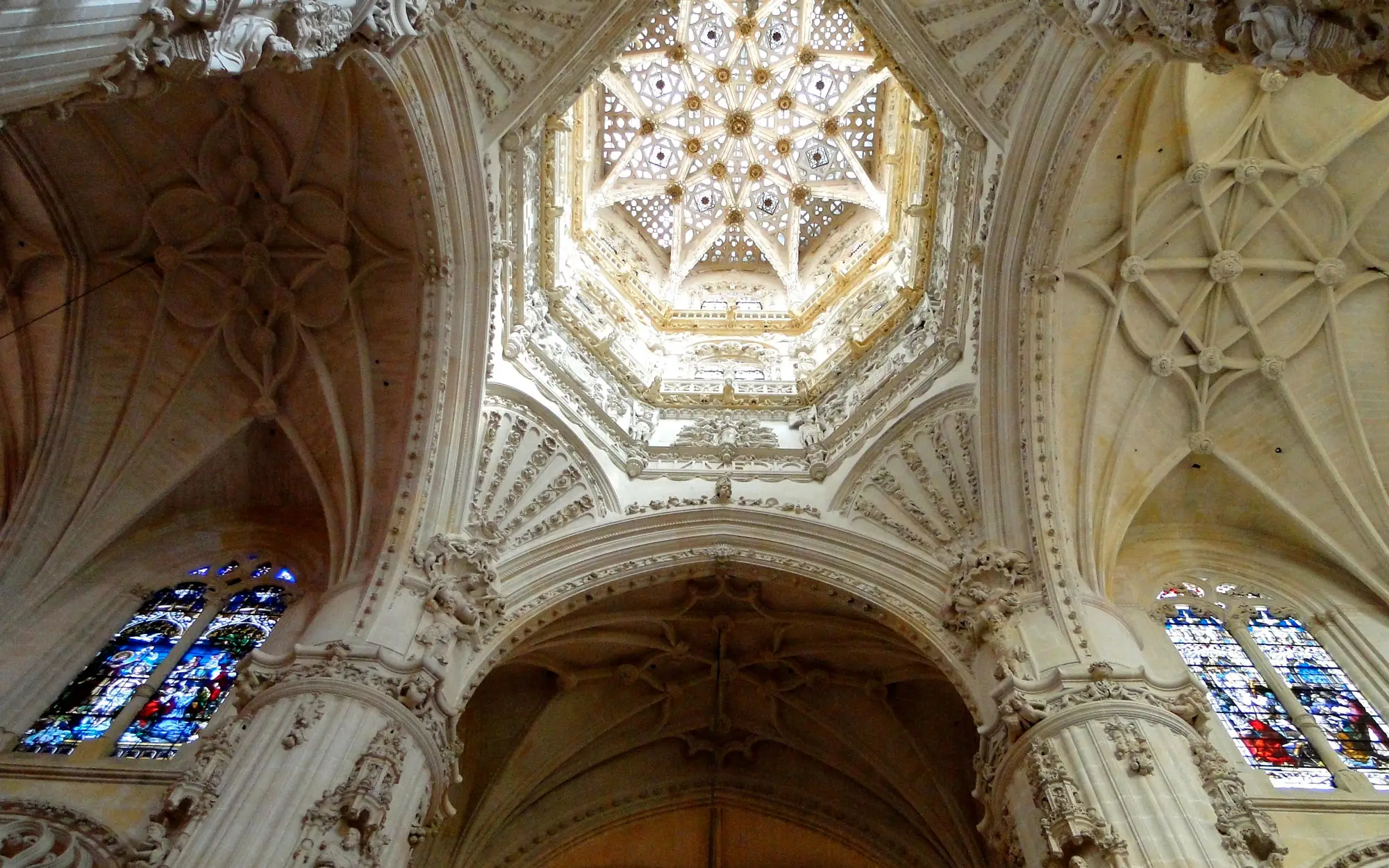
Burgos Cathedral, a masterpiece of Gothic splendor
The Cathedral of Saint Mary of Burgos, more commonly known as Burgos Cathedral, is not just a religious edifice but a symbol of architectural grandeur and historical significance. Located in the city of Burgos, in northern Spain, this UNESCO World Heritage Site is one of the most splendid examples of Gothic architecture in the world. Its construction, which began in the 13th century, reflects the evolution of Gothic style over several centuries, adorned with an array of artistic elements that create a visual symphony of stone.
The foundations of Burgos Cathedral were laid in 1221, under the reign of King Ferdinand III of Castile and Bishop Don Mauricio. The original design was heavily influenced by the classic French Gothic style, reminiscent of the great cathedrals of Paris and Reims. However, the cathedral's construction spanned several phases and centuries, allowing for the integration of various styles, including Renaissance and Baroque, which contribute to its unique architectural tapestry.
As you approach Burgos Cathedral, its exterior presents a breathtaking spectacle. The main façade, known as the Puerta del Perdón, is an exquisite example of Gothic artistry, featuring detailed sculptures, flying buttresses, and pinnacles. The most striking feature is the pair of openwork spires that crown the towers, creating an impression of weightlessness and grace.
The Cathedral's sides are equally impressive, featuring numerous chapels, each with its distinct architectural style. The Papamoscas, a mechanical clock with a figure that opens its mouth on the hour, adds an element of whimsy to the solemn grandeur.
Stepping inside Burgos Cathedral transports you into a world of awe-inspiring beauty. The vast nave, with its towering columns and ribbed vaults, creates a sense of verticality and lightness that is quintessential to Gothic architecture. The intricate stained glass windows, some dating back to the 13th century, bathe the interior in a kaleidoscope of colors, telling biblical stories and casting heavenly light on the stone floors.
One of the most remarkable features of the cathedral's interior is the Escalera Dorada, or the Golden Staircase, designed by Diego de Siloé in the 16th century. This masterpiece of the Spanish Renaissance, with its ornate balustrade and exquisitely carved details, leads to the choir and the main altar.
Burgos Cathedral is also home to the Chapel of the Condestable, one of the most beautiful examples of Isabelline Gothic style. Built in the 15th century, the chapel is a work of art in itself, with its star-shaped vault, flamboyant tracery, and the lavish tomb of Pedro Fernández de Velasco and his wife.
Burgos Cathedral, an architectural jewel in the heart of Spain, stands as a magnificent testament to the artistry and skill of medieval builders, encapsulating centuries of history, faith, and culture.

Architectural detail of the cathedral's dome.
Another significant aspect of the cathedral is its connection to Rodrigo Díaz de Vivar, better known as El Cid, a Castilian nobleman and military leader who is a national hero of Spain. The cathedral houses the tomb of El Cid and his wife, Doña Jimena, celebrating their historical and cultural legacy.
The choir of Burgos Cathedral, located in the center of the nave, is an impressive ensemble of sculptures, carvings, and choir stalls. Crafted in the 15th and 16th centuries, the stalls depict various scenes from the life of Christ, saints, and prophets, showcasing the skill of medieval woodcarvers.
The main altar, a remarkable work of art, is a vibrant display of religious iconography, gold, and polychrome. It narrates various biblical scenes and is a focal point for the spiritual life of the cathedral.
Burgos Cathedral also houses a museum and treasury, containing a wealth of religious artifacts, paintings, sculptures, and manuscripts. These collections provide insights into the religious, artistic, and cultural history of the region, making the cathedral not just a place of worship, but also a guardian of heritage.
Burgos Cathedral transcends its role as a mere structure; it is a symbol of the cultural and spiritual identity of the region. It has been a center of Christian faith for centuries, playing a significant role in the religious life of Spain. The cathedral is also a key stop on the Camino de Santiago, a famous pilgrimage route, adding to its spiritual significance.
The legacy of Burgos Cathedral is not confined to its architectural splendor; it lies in its ability to encapsulate the human spirit's aspirations, creativity, and devotion. Its ongoing conservation efforts ensure that this legacy is preserved for future generations, allowing them to witness the grandeur and beauty of medieval craftsmanship.
Burgos Cathedral stands as a testament to the ingenuity and artistry of the medieval era. Its towers, chapels, sculptures, and stained glass windows tell a story of faith, history, and culture that is as relevant today as it was centuries ago. A visit to this Gothic marvel is not just a tour of a historical monument; it is an experience that immerses you in the beauty and complexity of human achievement. Burgos Cathedral, in all its glory, remains an enduring symbol of Spain's rich cultural tapestry and a beacon of architectural magnificence.
Welcome to Spain!
Another interest sights
Spain
Madrid’s Plaza Mayor, a tapestry of history, culture, and vibrant urban life
Spain
Walled city of Toledo, the former capital of the Spanish Empire
Spain
The walled city of Cáceres, a medieval tapestry in modern times
Spain
The Tower of Hercules, the millenary lighthouse of La Coruña
Portugal
Dom Luiz I bridge in Porto, part of Eiffel's legacy in Portugal
Andorra
Share this Sight with: